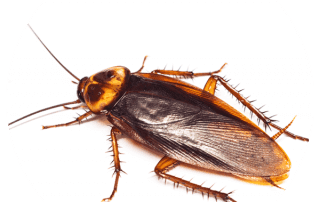How can you safely fix error problems? The key is to find an explanation for some of the pressing issues. You can click here the first step is to find out your irritation and the available options for checking for clear disorders.
![]()
Here are some other ways you can safely control interference:
- Try to anticipate a break first
- Ensure safe and appropriate use of pesticides
- Properly remove excess pesticides and pesticide chambers
- Do not attempt to use synthetics outside the interior
- Try not to admit that twice is better
- Do not attempt to transfer pesticides to different holders
- other functions
Try to injure your opponent first:
- Remove wells with food, water and shelter. Store food in plastic or glass rooms. Garbage with food scraps should be placed in tightly closed containers. Always avoid rubbish in your house.
- Repair the faulty pipes and do not allow water to accumulate anywhere in the house. Try not to collect water on a plate under your houseplants or cooler. Now try not to leave food and water on the animal.
- Chaos causes problems to be raised and hidden and difficult to decipher. Throw away things like stacks of paper, magazines or cardboard.
- Close where irritation may come and hide. For example, cracks and fissures around cabinets or floor moldings. Use iron wool to occupy the space around the pipes. Cover all openings with wire mesh.
- Find out what inconveniences you have and how to avoid them.
- Before sending it to your home, check the bundles or boxes for errors.
- Ensure safe and appropriate use of pesticides. Keep pets and children out of areas where pesticides are used.
- After improvements for prevention, you can include bait as the first line of protection against bedbugs or rodents.
- They are always successful and can be used with generally safe pesticide exposure as long as they are not exposed to children and pets.
Use abusive devices if necessary.
- Continue reading and follow the instructions on the pesticide label and the safety alarm.
- If the situation allows, use the finished item.
- To say you don’t use people outside to prevent irritation, ask them to find the source of the problem and fix it before applying pesticides. For example, you need to repair a broken toilet to get a source of water.
- Ask them to use needles and crack medications and drugs if possible.
- Only set synthetic compounds that are approved for home use.
- A list shows where the synthetics are available.
- Record the name and EPA registration number of all synthetic substances used by someone you use. You will need this information if you decide to view additional pesticide data.
- The error control manager should be able to provide information about the component, such as a material benefit fact sheet.
- Properly remove excess pesticides and pesticide chambers.
- Read the name and find out how the pesticide is disposed of and how the owner is.
- Many groups of people have family types of hazardous waste that identify unwanted pesticides. Call your waste disposal specialist for information on your area.
Do not attempt to use outdoor synthetic compounds indoors:
- Many synthetic compounds that are expected to be used externally are dangerous to use internally because they remain more harmful internally than externally.
Try not to admit that twice is better:
- Keep reading and follow the signs. Using an over-the-counter pesticide can be harmful to your family’s health.
Do not attempt to transfer pesticides to different holders:
- Store pesticides in their unique rooms.
- Simply calculate the amount you will use when the pesticide needs to be mixed with water.
Do not try to use empty pesticides to store anything else:
- Kids and others have been harmed by coincidentally devouring pesticides put away in food or refreshment compartments.
- Regardless of how well you wash the holder, it may as yet contain leftovers of the pesticide and could hurt somebody.
